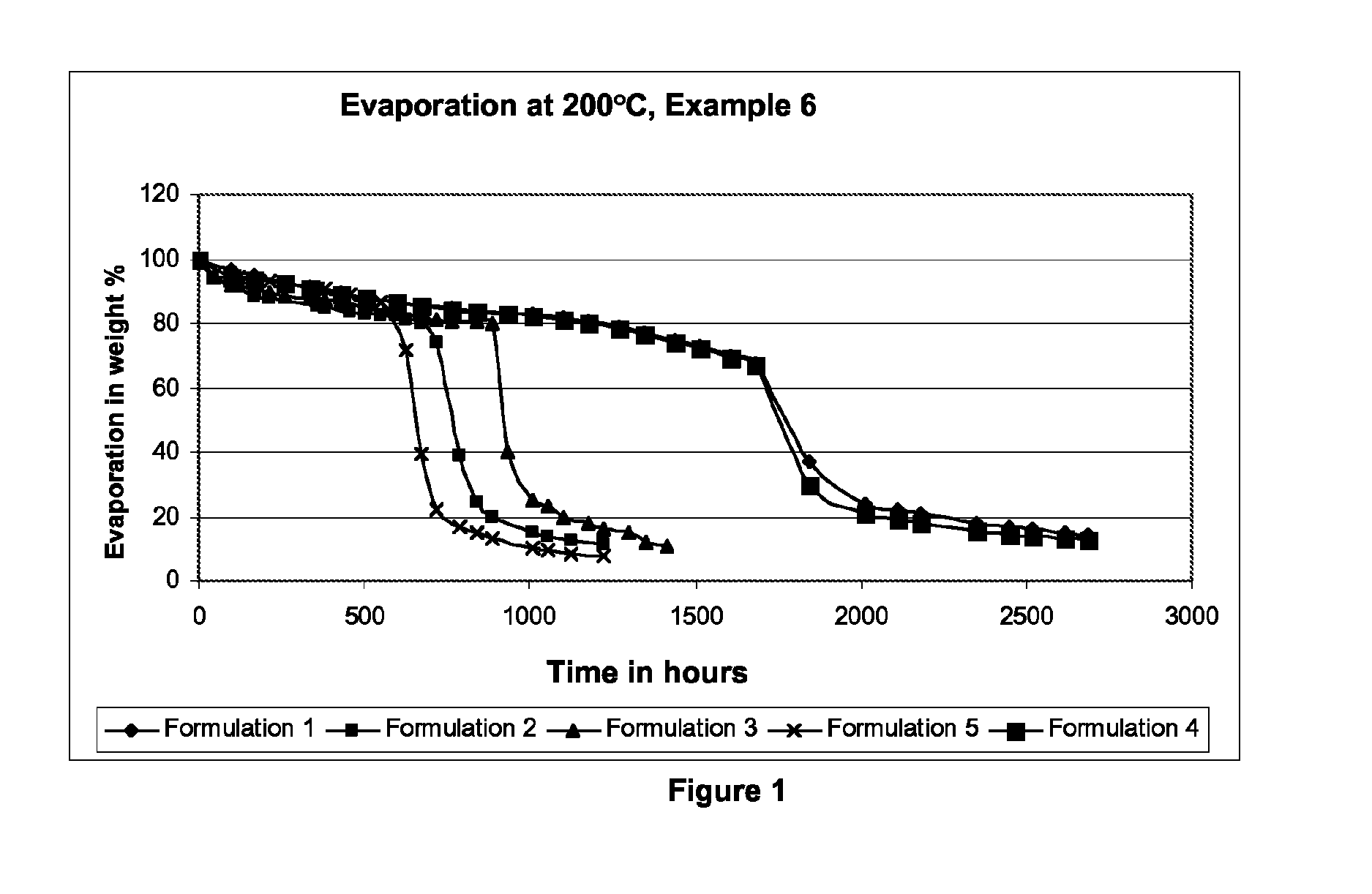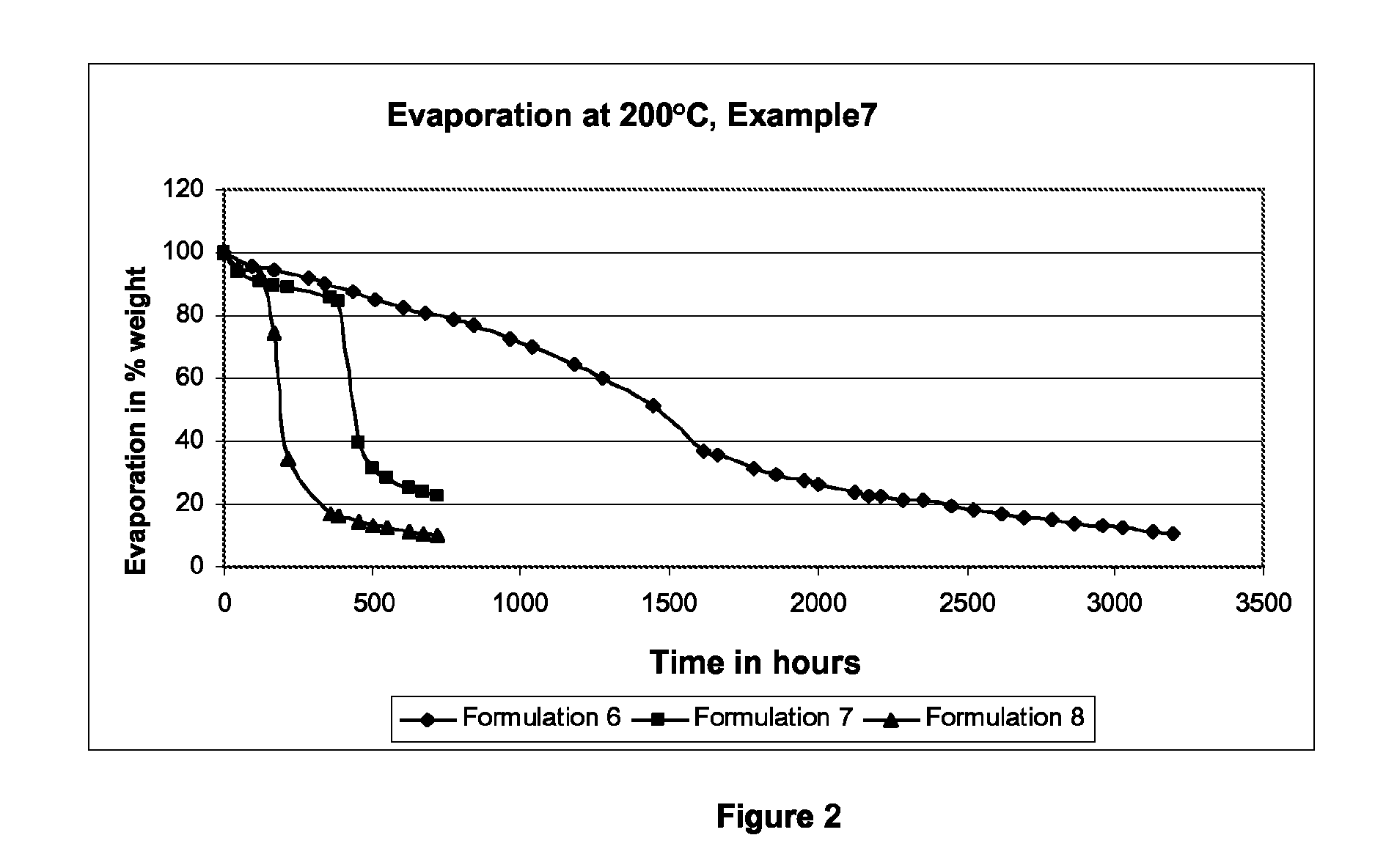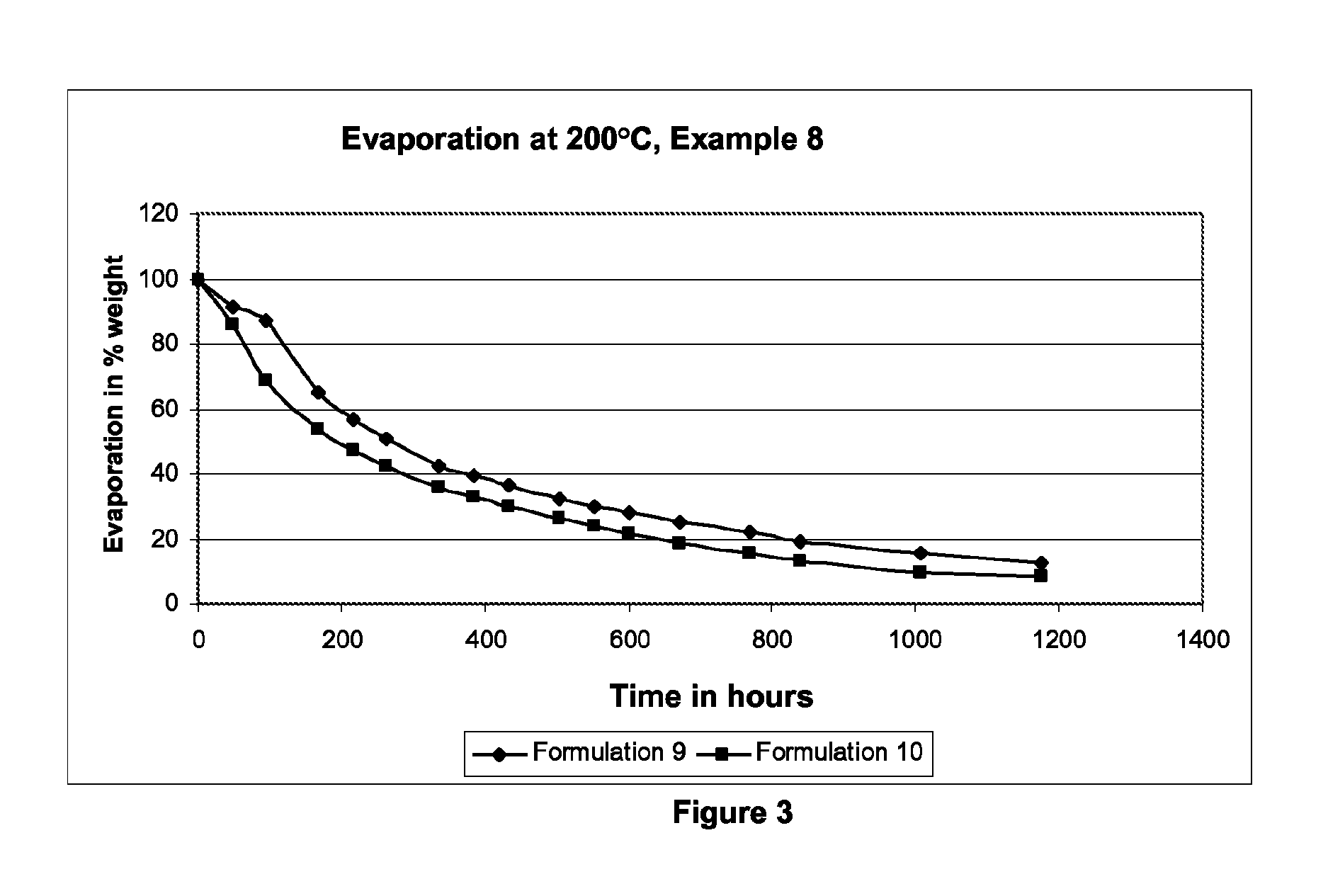Use of an oligomer-based additive for stabilizing a lubricating composition for a conveyor chain
a technology of additives and lubricants, applied in the direction of additives, lubricant compositions, petroleum industry, etc., can solve the problems of incompatibility of lubricants based on poly--olefins (pao) and the maintenance requirements of the conveyor system
- Summary
- Abstract
- Description
- Claims
- Application Information
AI Technical Summary
Benefits of technology
Problems solved by technology
Method used
Image
Examples
example 1
Preparing a Stabilized Lubricating Composition for a Conveyor Chain
A. Protocol for Preparing a Heat Stabilizing Agent for a Conveyor Chain
[0256]In a Pyrex fat flask, fitted with a stirring bar in stainless steel, a thermal jacket, a nitrogen bubbler, a Dean Stark and a cooler, load:[0257]50 g. OPAN,[0258]50 g. DODPA,[0259]116 g. SOLVENT (EXXSOL D 30).[0260]1) The reaction proceeds under inert atmosphere (nitrogen).[0261]2) Heat and stir (the temperature raise should be controlled).[0262]3) At a temperature of about 60° C., add 29.3 g. of KMnO4 at one time.[0263]4) Gradually increase the temperature between 100° C. and 200° C.[0264]5) Maintain these conditions, until the monomer has completely disappeared.[0265]6) At the end of the reaction, make the reaction mixture pass through a folded filter and then through a 1.2 μm membrane filter, until a deposit content of less than 2 mg / l is obtained. The K and Mn content is then nil.[0266]7) The solvent is removed under vacuum and by heatin...
example 2
Preparing a Stabilized Lubricating Composition for a Conveyor Chain
A. Preparing a Stabilizing Agent
[0282]A.1) In a Pyrex fat flask, fitted with a stirring bar in stainless steel, with a thermal jacket, a nitrogen bubbler, a Dean Stark and a cooler, load:[0283]100 g. DODPA,[0284]116 g. SOLVENT (EXXSOL DSP 100 / 140).[0285]A.2) The reaction proceeds under inert atmosphere (nitrogen).[0286]A.3) Heat and stir (the temperature raise should be controlled).[0287]A.4) At a temperature of about 70° C., add 14.6 g. of KMnO4 at one time.[0288]A.5) Gradually, increase the temperature between 100 and 200° C.[0289]A.6) Maintain these conditions, until a monomer residual content lower than 5% is obtained.[0290]A.7) At the end of the reaction, make the reaction mixture pass through a folded filter and then through a 1.2 μm membrane filter, until a deposit content of less than 2 mg / l is obtained. The K and Mn content is then nil.[0291]A.8) The solvent is removed under vacuum and by heating: depending ...
example 3
Preparing a Stabilized Lubricating Composition for a Conveyor Chain
A. Preparing a Stabilizing Agent
[0308]A.1) In a Pyrex fat flask, fitted with a stirring bar in stainless steel, with a thermal jacket, a nitrogen bubbler, a Dean Stark and a cooler, load:[0309]20 g. OPAN,[0310]80 g. DODPA,[0311]117 g. SOLVENT (EXXSOL DSP 100 / 140).[0312]A.2) The reaction proceeds under inert atmosphere (nitrogen).[0313]A.3) Heat and stir (the temperature raise should be controlled).[0314]A.4) At a temperature of about 70° C., add 14.6 g. of KMnO4 at one time.[0315]A.5) Gradually increase the temperature between 100 and 200° C.[0316]A.6) Maintain these conditions, until a DODPA residual content of about 20% is obtained.[0317]A.7) At the end of the reaction, make the reaction mixture pass through a folded filter and then through a 1.2 μm membrane filter, until a deposit content of less than 2 mg / l is obtained. The K and Mn content is then nil.[0318]A.8) The solvent is removed under vacuum and by heating...
PUM
| Property | Measurement | Unit |
|---|---|---|
| temperature | aaaaa | aaaaa |
| temperature | aaaaa | aaaaa |
| temperatures | aaaaa | aaaaa |
Abstract
Description
Claims
Application Information
 Login to View More
Login to View More - R&D
- Intellectual Property
- Life Sciences
- Materials
- Tech Scout
- Unparalleled Data Quality
- Higher Quality Content
- 60% Fewer Hallucinations
Browse by: Latest US Patents, China's latest patents, Technical Efficacy Thesaurus, Application Domain, Technology Topic, Popular Technical Reports.
© 2025 PatSnap. All rights reserved.Legal|Privacy policy|Modern Slavery Act Transparency Statement|Sitemap|About US| Contact US: help@patsnap.com



